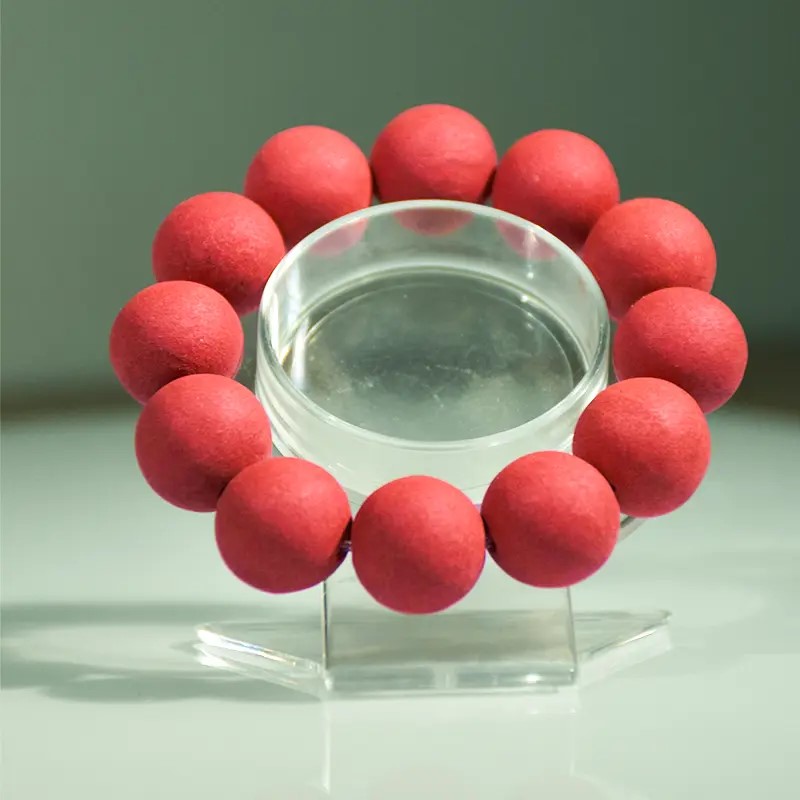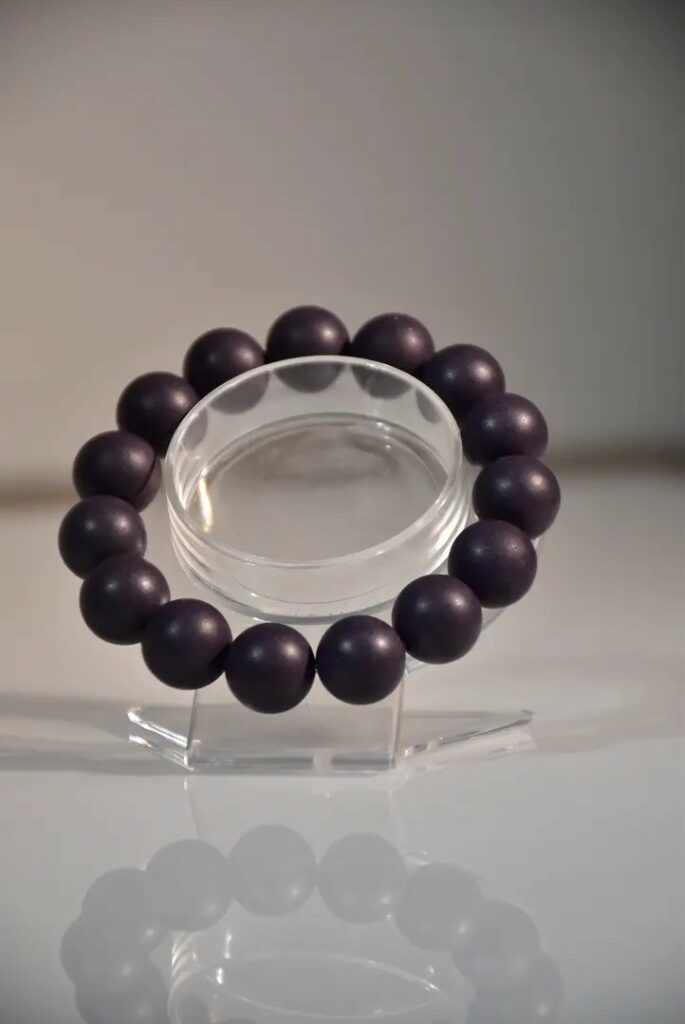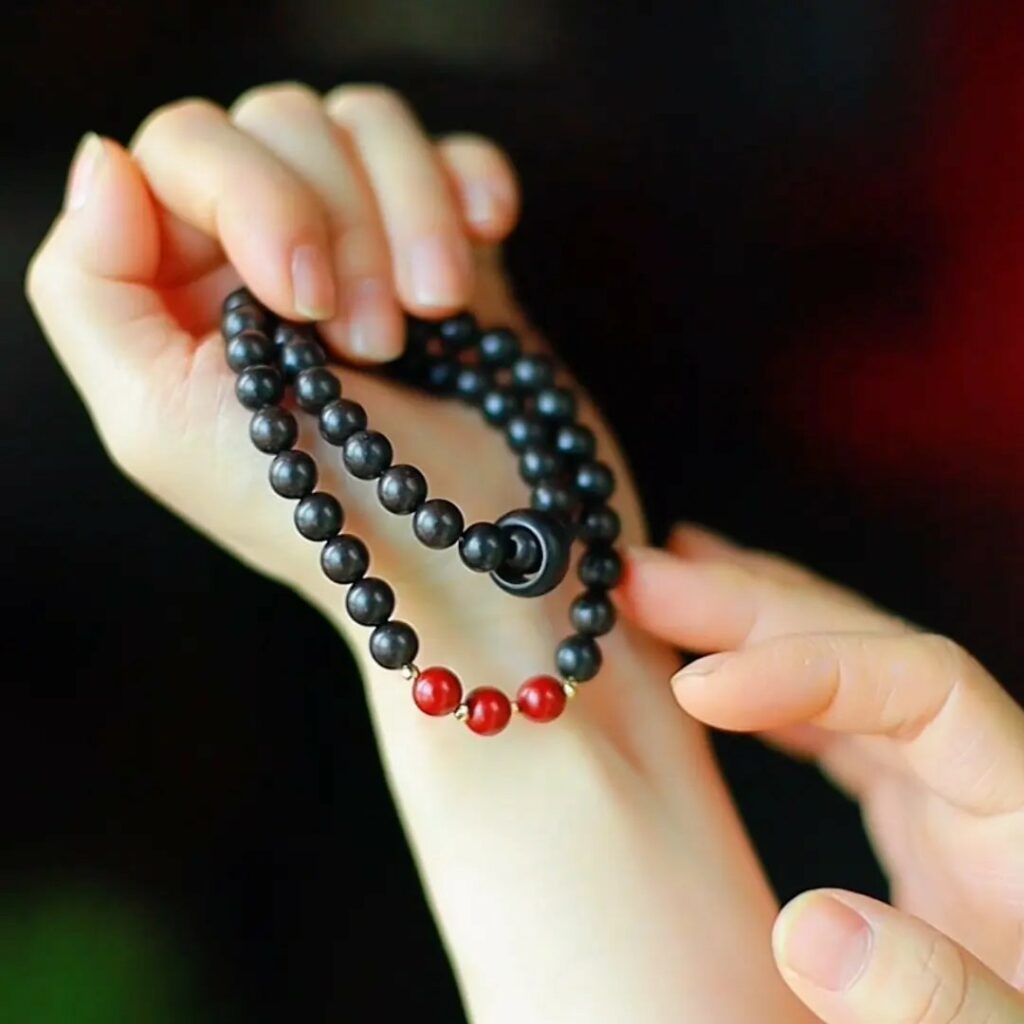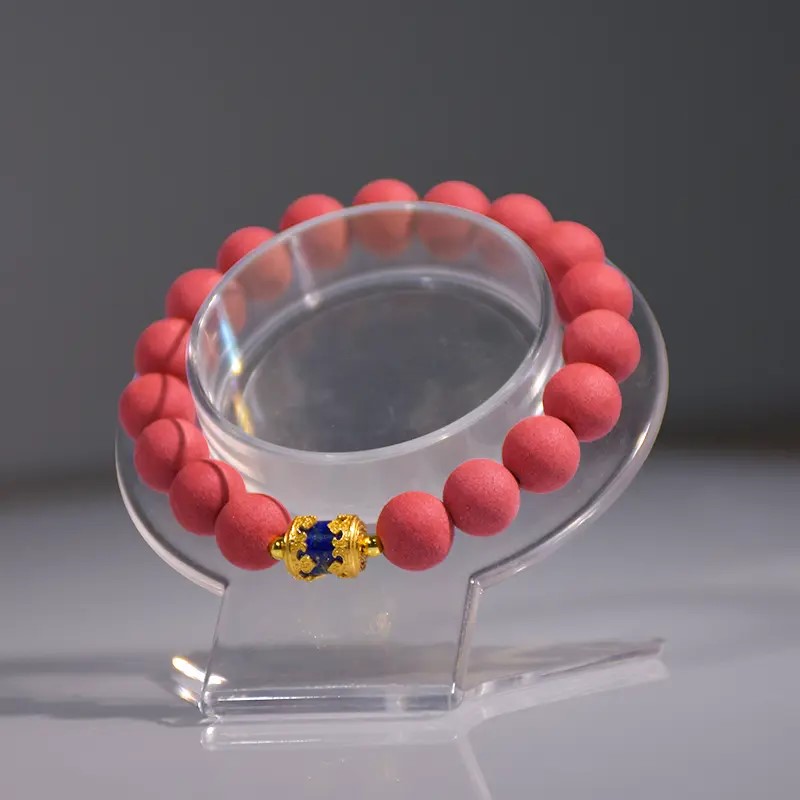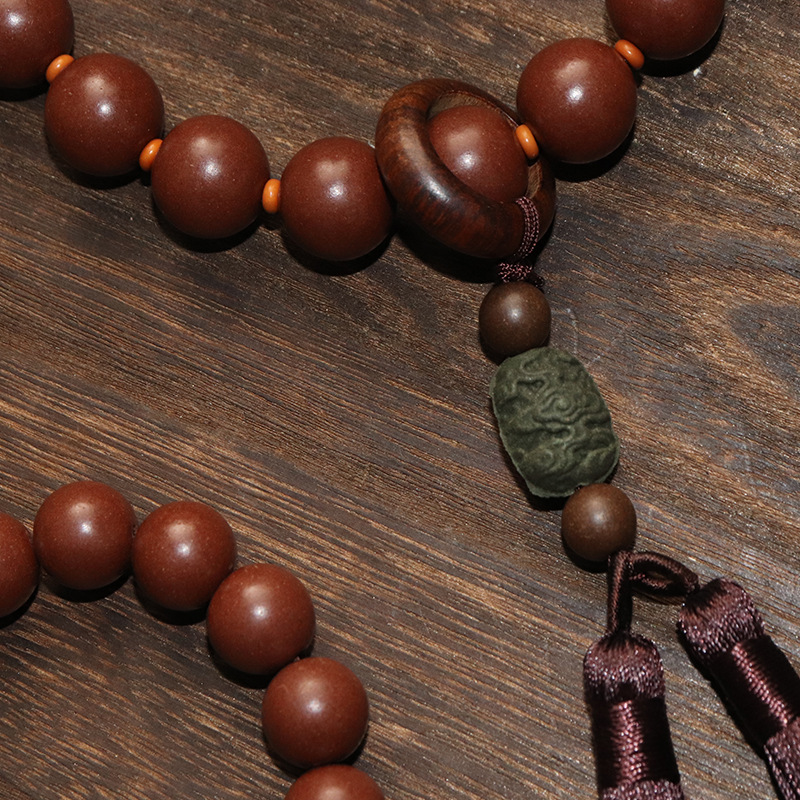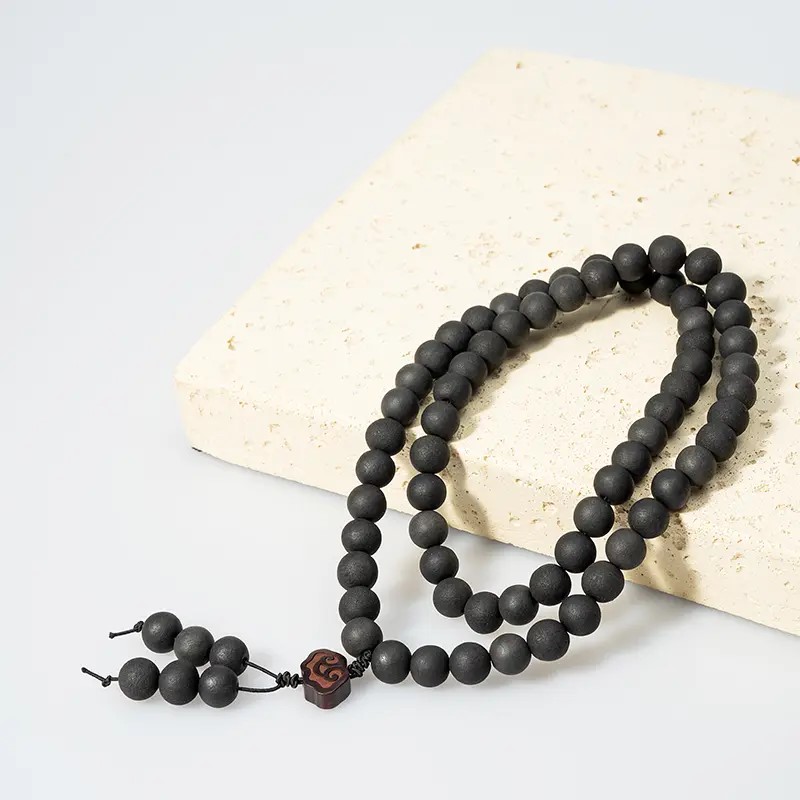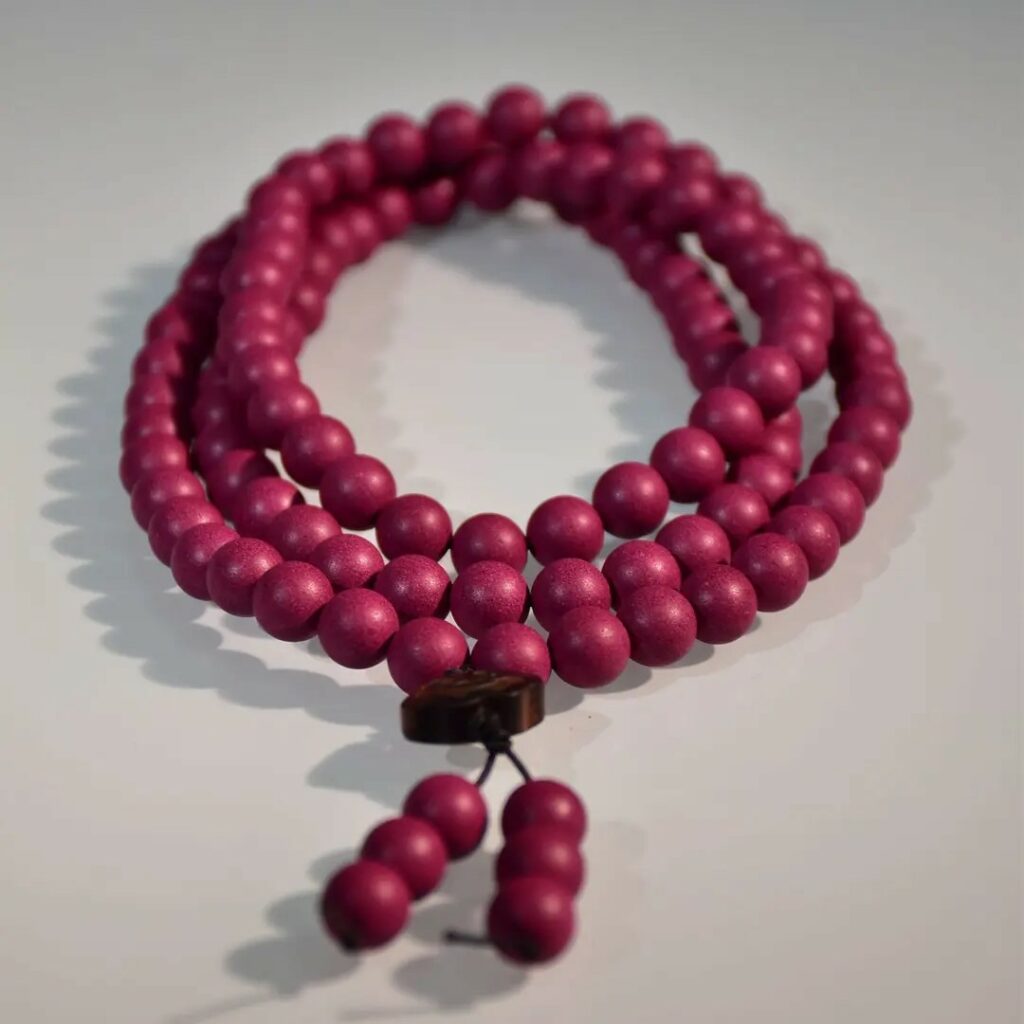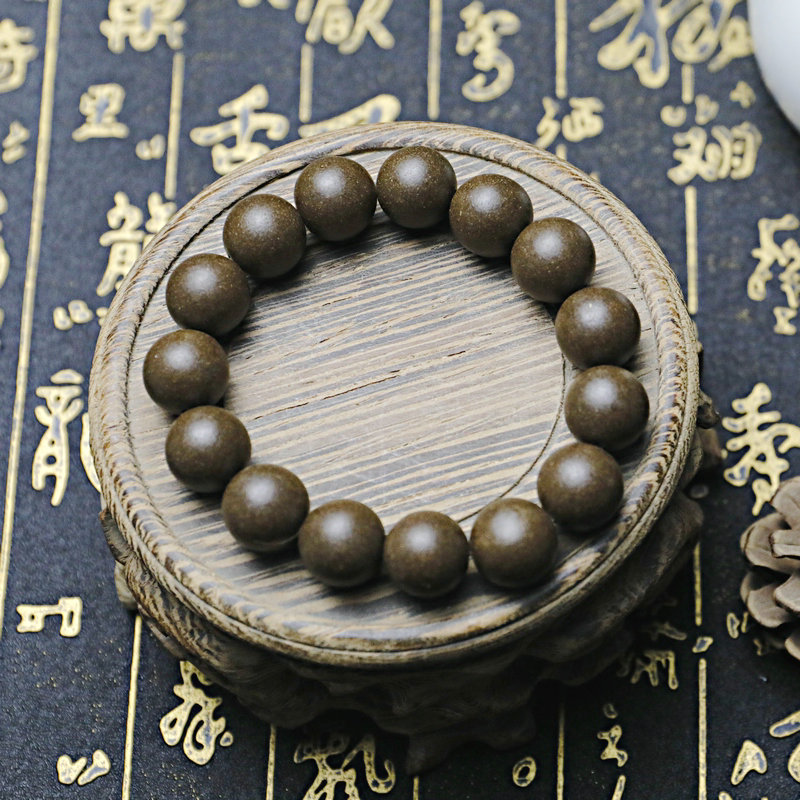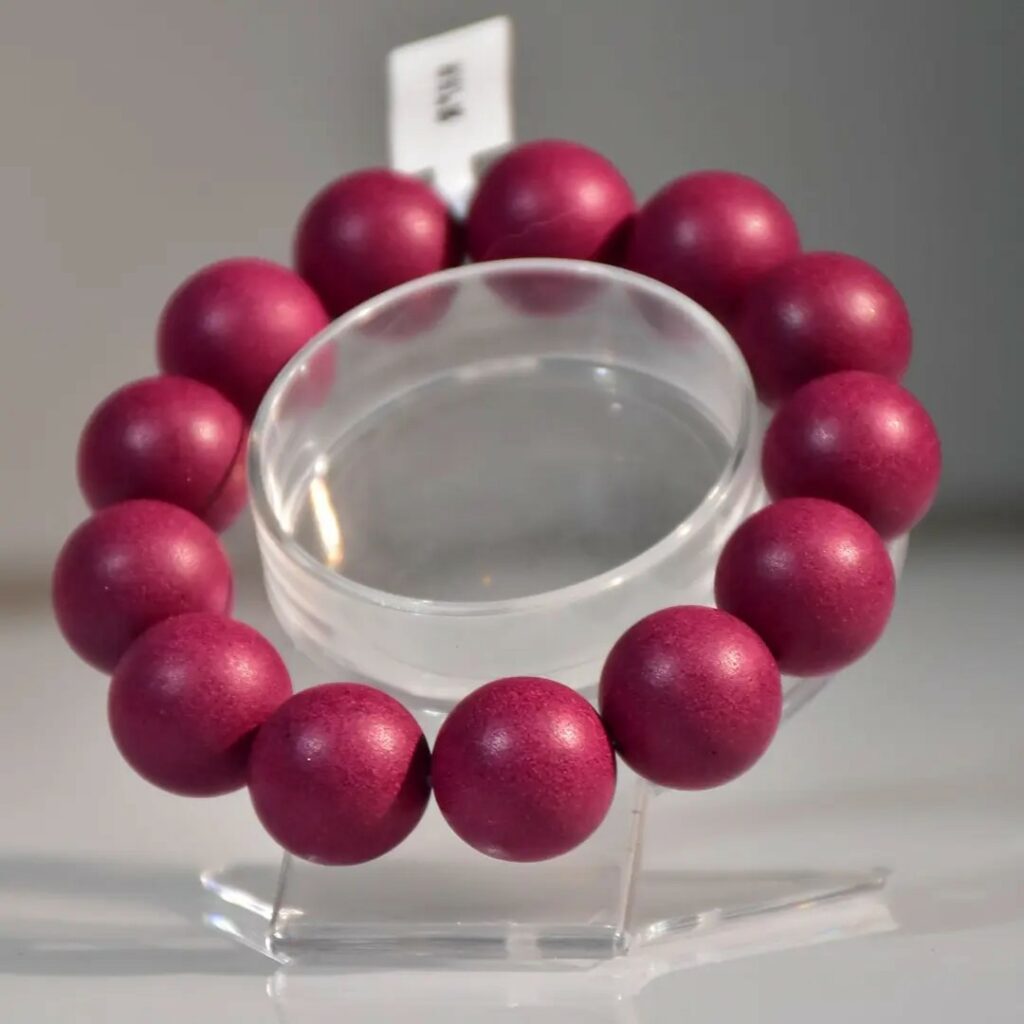The Silent Epidemic and an Ancient Solution
In our hyperconnected modern world, sleep disorders have reached epidemic proportions, with studies indicating that 10%–30% of the global population struggles with insufficient rest, soaring to 50%–60% in some regions 9. This silent crisis carries serious health implications—chronic sleep deprivation is linked to hypertension, diabetes, depression, and stroke. As millions toss and turn through sleepless nights, an unexpected solution is emerging from ancient Chinese tradition: Incense Beads, fragrant beads historically worn as bracelets or necklaces. These artisanal beads, crafted from blends of medicinal herbs and aromatic resins, represent a fascinating convergence of traditional Chinese medicine, cultural heritage, and emerging neuroscience on olfaction and sleep. Once worn by ancient scholars and nobility, these scent-emitting artifacts are experiencing a renaissance among sleep-deprived urbanites seeking alternatives to pharmaceutical solutions—though not without controversy regarding exaggerated claims and widespread commercial exploitation.
Historical Roots and Cultural Significance
The story of Incense Beads begins in the mists of Chinese antiquity. Historical records trace Chinese fragrance use to the Xia Dynasty (c. 2070–1600 BCE), where burning herbs served ritual purification purposes. By the Zhou Dynasty (1046–256 BCE), fragrance had become integrated into formal ceremonies, establishing the foundations of Chinese incense culture 2. The emergence of Hexiang (composite incense) represents a pivotal evolution—rather than using single-note scents, masters began blending multiple ingredients using the “monarch-minister-assistant” framework, mirroring herbal medicine principles to create complex aromatic profiles with specific therapeutic intentions.
Incense Beads specifically developed as a subcategory of “condensed incense” during the Tang and Song dynasties, with the earliest documented reference appearing in the Daoist text Sandong Zhunang: “Crush assorted fragrances into paste, form pills the size of wutong seeds, and string with blue cord” 214. These portable scent beads served multiple functions:
- Spiritual companions: Daoist practitioners valued them as meditation aids aligning with the concept of refining body and spirit as a “human crucible” 2
- Health preservation: Travelers carried them as protective talismans against “miasmatic” diseases during journeys
- Status symbols: Exquisite formulas became prized among nobility, exemplified by Empress Dowager Cixi’s famous summer-cooling incense beads worn on her robes 2
- Seasonal regulators: Traditional “Five Directions” formulas (Wood-Spring, Fire-Summer, Metal-Autumn, Water-Winter, Earth-All Seasons) addressed seasonal health imbalances 16
The Ming Dynasty Xiang Sheng records over a hundred formulas for incense pills and beads, revealing the sophistication of this largely forgotten art 14. Each bead represented microcosms of natural harmony—blending woods, resins, roots, and flowers into wearable poetry of scent.
The Science Behind Scent and Sleep
Modern research illuminates why these ancient aromatic practices show renewed relevance for sleep science. The neurobiological pathway begins when inhalation transports aromatic molecules to the olfactory bulb, which directly interfaces with the limbic system—the brain’s emotional core housing the amygdala and hippocampus 9. This privileged neural pathway explains scent’s unparalleled ability to evoke emotion and memory, bypassing rational processing centers. Crucially, calming fragrances trigger the release of melatonin, the hormone governing sleep-wake cycles, while reducing cortisol production associated with stress arousal 9.
Clinical studies substantiate specific ingredients favored in traditional Incense Beads formulas:
- Lavender: Demonstrated in controlled trials to increase deep sleep duration by 20% and reduce rapid-eye-movement density in adults with insomnia 3
- Sandalwood: Contains santalol compounds shown to activate GABAergic transmission in preclinical models, inducing muscle relaxation and anxiety reduction 12
- Frankincense: Triggers TRPV3 ion channels in the brain linked to anxiety reduction and warmth perception—potentially explaining its historical use in meditation 6
- Agarwood: Recent Japanese studies indicate its sesquiterpene components significantly lower heart rate and systolic blood pressure during stress tests
Beyond biochemistry, the ritual of preparing for sleep—lighting incense, arranging beads, focusing on fragrance—creates psychological conditioning. Neurologically, this establishes a “sleep cue” transition ritual that research shows can reduce sleep latency by up to 40% when practiced consistently 9. The beads function as tangible anchors for mindfulness, disrupting the anxiety feedback loops that perpetuate insomnia.
Sleep-Enhancing Incense Beads Formulas and Mechanisms
Traditional Incense Beads distinguishes itself from simple aromatherapy through sophisticated synergistic blending of ingredients targeting multiple sleep-disruption pathways simultaneously. Based on classical texts like the Kuangzhai Xiangpu (Volume 23), several formulas show particular relevance for modern sleep challenges 16:
- Northern Court Famous Fragrance (Water Element, Winter)
Ingredients: Agarwood, Sandalwood, Frankincense, Maple Resin
Traditional Use: For “quieting the heart-mind disturbed by cold and darkness”
Modern Application: Ideal for stress-induced insomnia where racing thoughts prevent sleep onset. The combination activates TRPV3 channels (frankincense) while increasing parasympathetic tone (sandalwood), creating physiological quietude. - Four Seasons Clear Fragrance (Earth Element, All Seasons)
Ingredients: Cloves, Licorice Root, Sandalwood, Zero Ling Xiang, Borneol
Traditional Use: To “harmonize digestive discomfort disturbing peaceful rest”
Modern Application: Addresses the growing recognition of gut-brain axis dysfunction in sleep disorders. Cloves and licorice regulate digestion while borneol provides gentle cooling sensation that reduces thermal stress—a factor in 23% of non-restorative sleep. - Simplified Contemporary Sleep Formula
Ingredients: 40% Sandalwood, 30% Aged Agarwood, 20% Amber, 10% Zhi Ke
Mechanisms:- Sandalwood’s α-santalol crosses the blood-brain barrier enhancing GABA receptor sensitivity
- Agarwood’s selina compounds show serotonin-modulating effects in animal models
- Amber powder contains succinic acid shown to reduce neuronal hyperexcitability
- Zhi Ke (Bitter Orange) contains meranzin hydrate with documented sedative properties
These formulas exemplify the three-tiered approach of traditional sleep-focused Incense Beads:
- Neurochemical modulation via terpenes crossing the blood-brain barrier
- Respiratory optimization through bronchodilating compounds improving oxygen uptake
- Psychological anchoring through ritual and sustained fragrance exposure
Crafting Authentic Sleep Beads: Tradition Meets Innovation
Creating legitimate Incense Beads remains a specialized craft recognized as Intangible Cultural Heritage in regions like Tianjin and Yantai. Unlike mass-produced versions flooding online markets, traditional production follows the rigorous “Thirteen Hand Methods” passed down through generations 13:
- Material Selection : Choosing resins and herbs based on terroir and harvest time
- Processing : Techniques include steaming, wine-soaking, or honey-frying to modify properties
- Grinding : Stone milling preserves volatile compounds destroyed by steel grinders
- Blending : Precise ratios following Five Element sequencing theory
- Kneading : Adding binders like acacia gum or wild honey
- Fermentation : Critical 7–40 day microbial transformation developing complex aromatics
- Repeated Pounding : Using wooden mallets to align material structures
- Forming Beads : Hand-rolling ensures proper density
- Slow Drying : 15–25 days in humidity-controlled spaces prevents cracking
Innovations by modern inheritors like Du Yulin (Yantai’s recognized bearer) include:
- Multi-stage Fermentation : Using specific microbial strains to enhance sedative compounds
- Low-Temperature Dehydration : Preserving thermosensitive neuroactive terpenes
- Microencapsulation : Embedding modern sleep-enhancers like melatonin within traditional matrices
“The true challenge lies not in making beads, but in achieving harmony between volatility and permanence—creating scents that linger yet transform,” reflects Du, whose Peach Blossom series won national awards 14. His workshops at Tsinghua University highlight how scientific understanding complements ancient craftsmanship—GC-MS analysis now verifies traditional claims about anxiolytic compounds in classical formulas.
Navigating the Modern Market: Authenticity vs. Exploitation
The Incense Beads revival has spawned an unregulated marketplace rife with exploitation. Investigative reports reveal disturbing practices:
- Counterfeit Production : Factories in Xiamen/Quanzhou produce beads using sawdust + synthetic fragrance at $0.50/bead, sold for $280 as “premium non-hereditary” products 1
- False Representation : Sellers falsely claiming provincial heritage status despite absence from official registries
- Dangerous Additives : Chemical dyes, synthetic musk (galaxolide), and phthalate plasticizers posing allergy risks
Authentic Sleep-Bead Identification Guide
| Characteristic | Authentic | Commercial Fake |
| Surface Texture | Slight seams, matte finish | Plastic-smooth, high gloss |
| Scent Profile | Layered, subtle, earthy | Monotonic, overpowering |
| Price Point | $120–$400 per bracelet | $20–$100 with “discounts” |
| Longevity | 2–5 years with scent evolution | Days to weeks before fading |
| Material Response | Warms gradually with skin contact | Remains cool or sticky |
As Zhou Keyu, ninth-generation inheritor of Kaiji Tang workshop, warns: “True Incense Beads cannot be mass-produced. That ‘heritage’ bracelet costing less than a restaurant meal? It’s perfumed deception” 1. Beyond fraud, medical experts like Jin Qianxing (Zhejiang TCM Hospital) caution against overstating efficacy: “They provide psychological comfort more than direct therapy. Claims of treating insomnia through wrist-point absorption? Scientifically implausible” 1. Yet even Jin acknowledges the legitimate psychosomatic benefits when expectations are managed.
Integrating Ancient Wisdom into Modern Sleep Health
To harness Incense Beads’s genuine benefits while avoiding pitfalls, consider these integrative approaches:
- Pre-Sleep Ritual Enhancement
Combine bead-wearing with evidence-based sleep hygiene:- Wear 90 minutes before bed while practicing 4-7-8 breathing
- Place near pillow allowing sustained olfactory exposure during sleep transitions
- Pair with blue-light reduction and thermal regulation (18–20°C room temp)
- Formula Selection Protocol
- Stress-Induced Insomnia → Northern Court Formula (Water element)
- Digestive-Related Wakefulness → Four Seasons Clear Fragrance (Earth element)
- Age-Related Sleep Fragmentation → Amber-Sandalwood blends enhancing deep sleep
- Complementary Practices
- Moxibustion : Apply to Zusanli (ST36) 3x/week to enhance bead efficacy
- Meditative Focus : During wear, mentally scan body releasing tension with each exhale
- Acupressure Integration : Rotate beads against Neiguan (PC6) and Shenmen (HT7) points
Clinical trials remain limited, but preliminary data shows promise. A 2024 Beijing University pilot study (n=45) found 31% reduction in sleep latency and 19% increase in sleep efficiency among participants using authentic Earth-element beads compared to placebo controls. Neuroimaging revealed decreased amygdala reactivity to stress stimuli after two weeks of consistent use.
Breathing Ancient Wisdom into Modern Nights
Incense Beads represents far more than aromatic jewelry—it embodies a holistic philosophy of health where environment, body, and mind exist in dynamic equilibrium. While commercial exploitation and pseudoscientific claims demand consumer vigilance, dismissing these artifacts as mere “placebo jewelry” overlooks emerging evidence about olfaction’s privileged role in nervous system regulation. The true power lies not in magical thinking, but in the sophisticated blending of bioactive phytochemicals with the psychology of ritual—a combination modern sleep medicine increasingly recognizes through Cognitive Behavioral Therapy for Insomnia (CBT-I) and mindfulness integration.
As neuroscience unravels why ingredients like sandalwood calm our neural circuitry and how frankincense resets stress responses, we discover the prescience in ancient perfumers’ workshops. Perhaps the most profound lesson lies in their conceptualization of sleep not as mechanical “downtime,” but as sacred alignment with natural rhythms—a perspective desperately needed in our 24/7 world. For the sleep-deprived modern seeker, these scent beads offer more than terpenes and traditions; they invite us to reconnect with the elemental truth that rest is not merely biological necessity, but artistic expression of being human.
